REGISTER AND BOOK YOUR COURSE
Remember: The best thing to do is email first and make sure the course isn't sold out and is running. (Usually we can accommodate.)
Then, upon check out please state the date you are booking or registering for. Thank you.
RE-CERT: If you are re-certifying you will need to be within your certification period. Not expired. And at the same level.
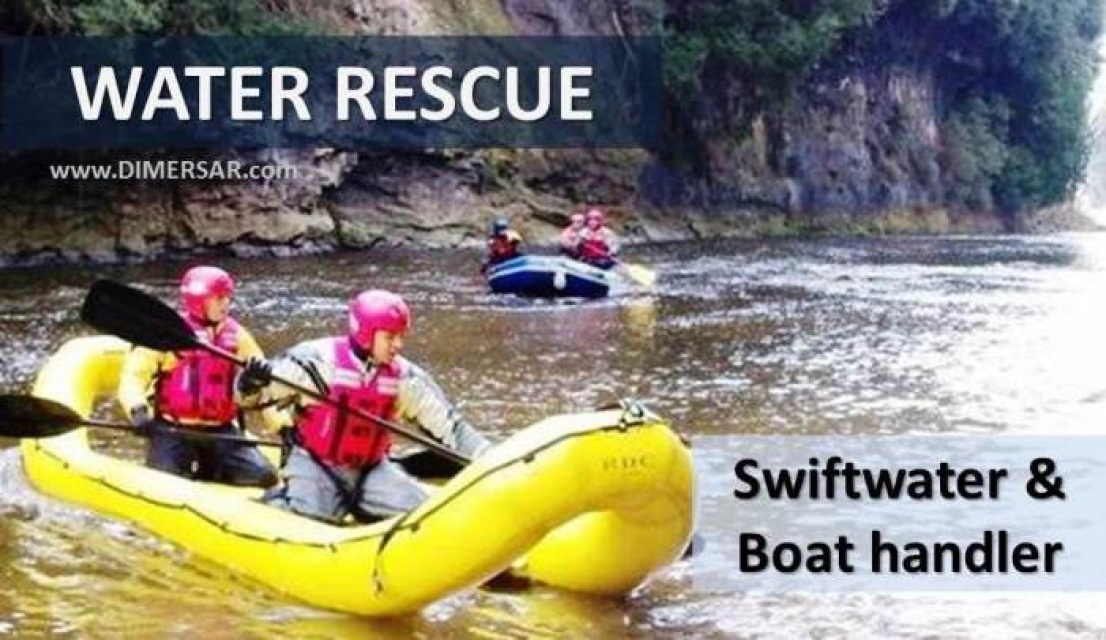
SWIFTWATER RESCUE
2017 NFPA 1006 compliant - Chapter 17
For full description see the relevant course tab / link
All levels require some additional pre-course reading and videos etc.
Tech & Instructor: 5 Days / One week intensive i.e., Monday to Friday
Operations: 3 Days i.e., Monday to Wednesday
Re-certification: 2 Days i.e., Weds & Thurs (NB: Must have IN DATE certificate for that level. Not expired.)
SWIFTWATER RESCUE
Summary: This course covers the NFPA Compliant standards for Swiftwater Rescue (SRT)
- Candidates MUST be able to Swim
- Candidates should have First Aid / CPR
This course is TECHNICIAN LEVEL
- This course is specially tailored for people with 'some' previous experience in Water Rescue to become certified as a Swiftwater Rescue Technician I.
Description
Upon the successful completion of this course, participants will be able to perform water rescue operations, utilizing appropriate equipment, methodologies, protocols, and patient and resource management techniques.
Compliance / Standard:
- NFPA 1006 2013 Edition
- Also (NFPA 1983 2012 Edition)
- Flood & Swiftwater Rescue Technician
Will require additional "conversion" info.
Target: Search and Rescue, Water Rescue Teams, Flood Rescue Teams, Disaster Response Agencies, Fire and Rescue Departments, NFPA Compliant Teams, Those involved in rope rescue for height, National and International responders and Incident Managers,
Prerequisites Due to the nature of this training, participants should be comfortable at working in water and be able to swim.
- Safety standards are maintained throughout the course.
- ALL participants must comply.
- A basic good fitness level is required
Course will cover a multitude of subjects i.e.
- Introduction to Rescue and Team Work
- NFPA Standards for Tech Rescue
- Conducting Site Survey
- Personal Protective and Team Equipment
- Drowning and Rescue
- River Orientation and Water Hydrology
- Flood and Swiftwater Rescue
- Developing Search Parameters and Procedures
- Conducting Shore Based Rescue Operations
- Using Water Rescue Rope Throw Bags
- Deploying, Operating, and Recovering Non-Powered Watercraft
- Boat-Assisted & Boat-Based Rescue Operations*
- Shallow water crossings
- Self rescue swimming skills
- In-Water Rescues during the day OR night
- Understand Helicopter user in Swiftwater Rescues
- Size-up, pre-planning and Incident Management
- Water based search techniques
- Flood management inc. Vehicle use
- Boat introduction: types, applications, limitations
- Go rescues, live bait, tethered swims etc.
- Knots, anchors and mechanical advantage review
- Rope systems & mechanical advantage
- Paddle boat handling
- Use of Carlson / Rescue boards
- Medical Treatments
Medical Considerations in Search and Rescue Operations

Equipment needed:
- Suitable Rescue helmet with a chin strap
- Dry suit / Wet suit
- Neoprene Water Rescue gloves suitable for water
- Water Rescue boots
- Rescue Whistle
- PFD / Flotation Device
Depending on the level sought you may get more than one Certificate from more than one organisation.
(For UK Attendees we can also provide DEFRA Modules and Required Knowledge as part of the DEFRA Asset List and National Flood Response. Module 3.)

Pictured: One of the Instructors (coxing boat left) deployed to floods in the Indus river in Pakistan
GENERAL BOOKING POLICY
Please note that all courses are paid for up front and in full (unless a previous arrangement has been made). Any cancellations before 7 days are due a full refund. Any cancellations within 7 to 4 days may be substituted or credited toward another course. There are no cancellations or refunds within 4 due to the expenses incurred and the course being confirmed but if it's not within 48 hours - there may be substitutions. Discuss your concerns if you have any. We will always try to work with you.
NO DRINKING / SMOKING / VAPING
Please note there is NO drinking during the course. Anyone impaired by drugs, alcohol or medication will not be able to attend training.
We support the Government's stand on non-smoking and ask any smoking, including vaping - not be done in the proximity of others during the course.
SAFETY
We have a duty of care and require a high degree of safe practise during the course. There are numerous potential hazards and risks. We ask everyone to take responsibility for their own and each others health and safety. Any unsafe practises or areas should be reported.
MEDICAL
If anyone feels unwell or is nursing a cold or infection etc. please feel free to discuss it with the DIMERSAR Directing Staff. We also carry a medical kit for emergencies.
NON-PAYMENT / OVERDUE ACCOUNTS
Please note that late payment and those who have not set up a credit account may be subject to full charge and monthly assessment and 2% interest per month
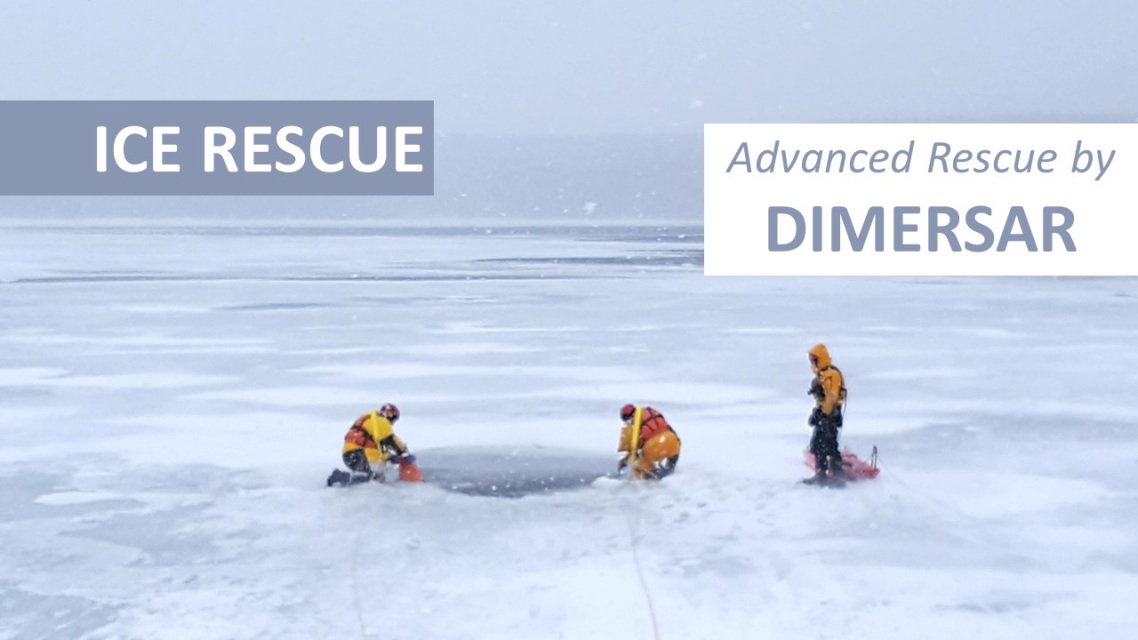
ICE RESCUE
2017 NFPA 1006 compliant - Chapter 19
For full description see the relevant course tab / link
All levels require some additional pre-course reading and videos etc.
Tech & Instructor: 5 Days / One week intensive i.e., Monday to Friday
Operations: 3 Days i.e., Monday to Wednesday
Re-certification: 2 Days i.e., Weds & Thurs
NB: Must have IN DATE certificate for that level. Not expired.
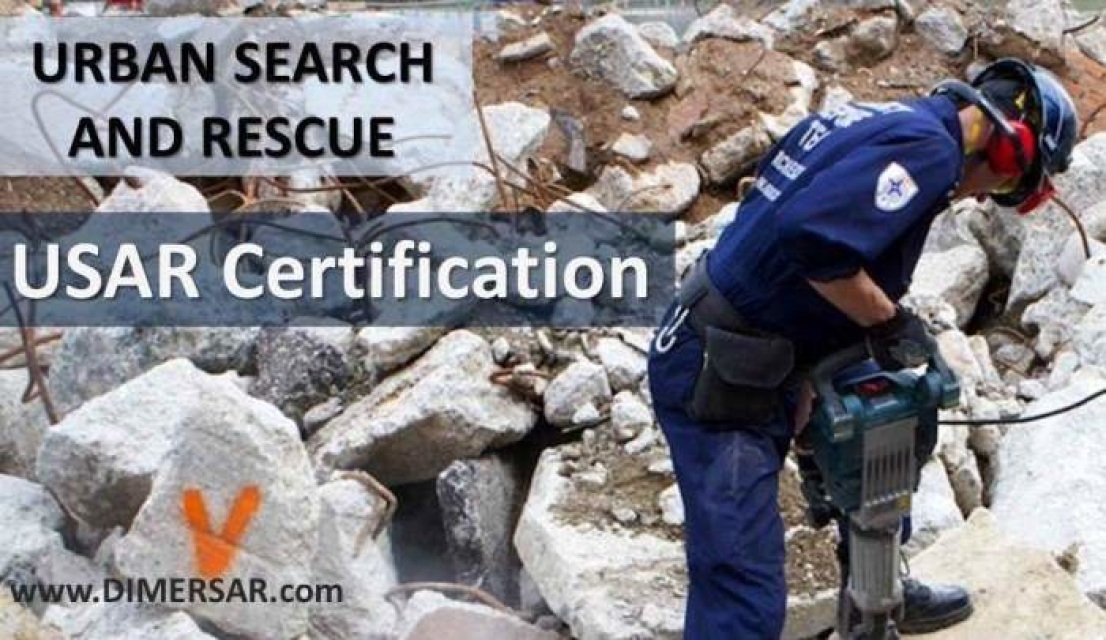
COLLAPSED STRUCTURE SAR / USAR
2017 NFPA 1006 compliant - Chapter 6 USAR
Incorporates the UN INSARAG and FEMA elements
For full description see the relevant course tab / link
All levels require some additional pre-course reading and videos etc.
Tech & Instructor: 10 Days / Two week intensive i.e., Monday to Friday X 2 (plus a weekend activity)
Operations: 5 Days i.e., Monday to Friday
Awareness / Responder Level: 2 Days (Mon & Tues)
Re-certification: 5 Days i.e., Monday to Friday
NB: Must have IN DATE certificate for that level. Not expired.

SURFACE WATER RESCUE
2017 NFPA 1006 compliant - Chapter 16
For full description see the relevant course tab / link
All levels require some additional pre-course reading and videos etc.
Tech & Instructor: 5 Days / One week intensive i.e., Mon to Fri
Operations: 3 Days i.e., Monday to Wednesday
Re-certification: 2 Days i.e., Weds & Thurs
NB: Must have IN DATE certificate for that level. Not expired.
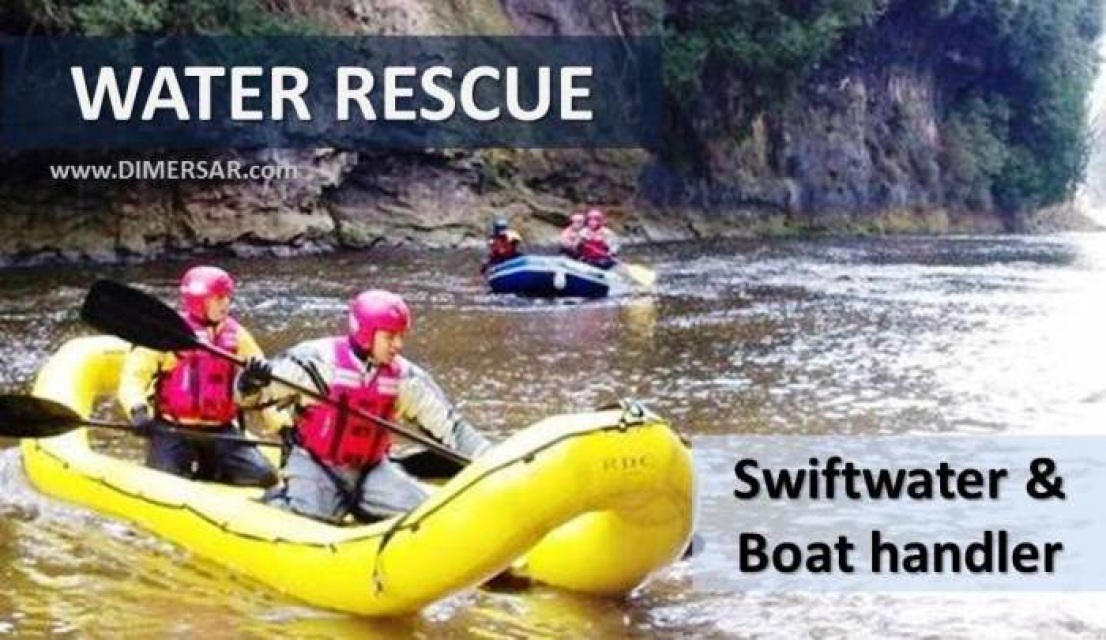
BOAT OPERATIONS & RESCUE
2017 NFPA 1006 compliant - Chapter 17
For full description see the relevant course tab / link
All levels require some additional pre-course reading and videos etc.
Tech & Instructor: 5 Days / One week intensive i.e., Monday to Friday
Operations: 3 Days i.e., Monday to Wednesday
Re-certification: 2 Days i.e., Weds & Thurs (NB: Must have IN DATE certificate for that level. Not expired.)
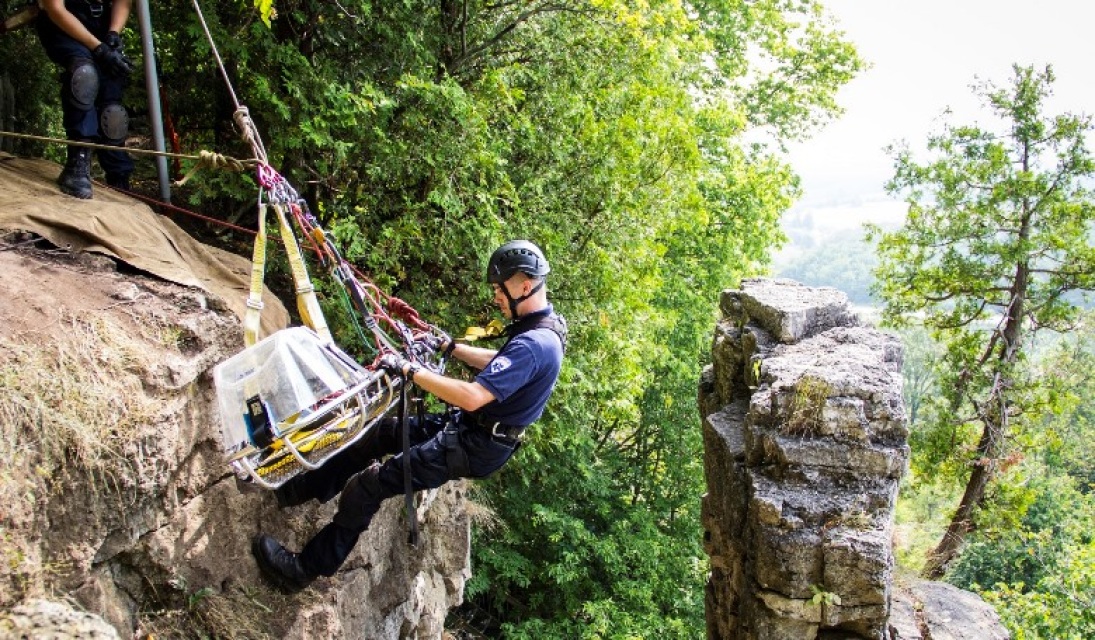
ROPE RESCUE
2017 NFPA 1006 compliant - Chapter 5
For full description see the relevant course tab / link
All levels require some additional pre-course reading and videos etc.
Tech & Instructor: 5 Days / One week intensive i.e., Mon to Fri
Operations: 3 Days i.e., Monday to Wednesday
Re-certification: 2 Days i.e., Weds & Thurs
NB: Must have IN DATE certificate for that level. Not expired.
HIGH ANGLE ROPE RESCUE
- TECHNICIAN LEVEL &
- TRAINER LEVEL *
* Pre-requisites to attend trainer level. (Previous Rope Certifications)
Summary: This course covers the NFPA Compliant standards for High Angle Rope Rescue. Candidates should have First Aid / CPR
Description
Upon the successful completion of this course, participants will be able to perform rope rescue operations, utilizing appropriate equipment, methodologies, protocols, and patient and resource management techniques.
Compliance / Standard: NFPA 1006 2017 Edition
Also NFPA 1983 2017 Edition & NFPA 1670
Target: Search and Rescue, Rope Rescue Teams, Fire and Rescue Departments, Power Generation Rescue, NFPA Compliant Teams, Those involved in rope rescue for height, National and International responders and Incident Managers,
Prerequisites
Due to the nature of this training, participants should be comfortable at working at height Safety standards are maintained throughout the course.
ALL participants must comply.
A basic good fitness level is required
They will also have the skills and knowledge required for certification to Chapter 6, "Rope Rescue" Technician as described in the National Fire Protection Association (NFPA) 1006, Standard For Technical Rescuer Professional Qualifications (2017 edition), including the area of multi-point anchors, rappelling systems, and ascending systems.
Depending on level sought - topics will include
- NFPA Standards for Compliance
- Risk Assessment and Size up
- Site Operations and SAR Safety
- No. 1 Rule of Rescue
- Don & Doff PPE etc
- Rescue Equipment and Maintenance
- Types of Ropes, Differences and Knot Types
- Low Angle Rescue
- Rappelling Systems
- Ascending Systems
- Patient Packaging
- Anchor Systems
- Belay Systems
- Lowering Systems
- Lowering System Exercises
- Hauling Systems
- Rescue functions in a team environment
- Resolving complex rescues in the hot zone
- Medical Treatments
Pertinent Medical and First aid including Orthostatic Shock
This course is targeted for all emergency response personnel involved with technical rescue incident response, and is designed to meet the training requirements of NFPA 1006.
Equipment needed
We provide ALL rescue equipment and safety gear including harnesses and helmets
You should bring:
- Riggers / Rescue gloves suitable for rope work
- Eye protection
- Boots or shoes with ankle support *
- Knee pads (advisable / not compulsory)
CERTIFICATION
- Certificate
- Wallet Card
- Written materials
- Name on registry
- LOCATION
- Rattlesnake Point, Milton
GENERAL BOOKING POLICY
Please note that all courses are paid for up front and in full (unless a previous arrangement has been made). Any cancellations before 7 days are due a full refund. Any cancellations within 7 to 4 days may be substituted or credited toward another course. There are no cancellations or refunds within 4 due to the expenses incurred and the course being confirmed but if it's not within 48 hours - there may be substitutions. Discuss your concerns if you have any. We will always try to work with you.
NO DRINKING / SMOKING / VAPING
Please note there is NO drinking during the course. Anyone impaired by drugs, alcohol or medication will not be able to attend training.
We support the Government's stand on non-smoking and ask any smoking, including vaping - not be done in the proximity of others during the course.
SAFETY
We have a duty of care and require a high degree of safe practise during the course. There are numerous potential hazards and risks. We ask everyone to take responsibility for their own and each others health and safety. Any unsafe practises or areas should be reported.
MEDICAL
If anyone feels unwell or is nursing a cold or infection etc. please feel free to discuss it with the DIMERSAR Directing Staff. We also carry a medical kit for emergencies.
NON-PAYMENT / OVERDUE ACCOUNTS
Please note that late payment and those who have not set up a credit account may be subject to full charge and monthly assessment and 2% interest per month
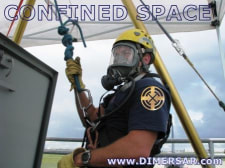
CONFINED SPACE RESCUE
Confined Space Rescue
2017 NFPA 1006 compliant
For full description see the relevant course tab / link
All levels require some additional pre-course reading and videos etc.
Tech & Instructor: 5 Days / One week intensive i.e., Mon to Fri
Operations: 3 Days i.e., Monday to Wednesday
Re-certification: 2 Days i.e., Weds & Thurs
NB: Must have IN DATE certificate for that level. Not expired.
CONFINED SPACE RESCUE COURSE INFO
WHAT TO BRING
- Please bring suitable clothes for weather and environment.
- Long pants / trousers and jackets / sweaters may be appropriate.
- Please bring your "Riggers / work gloves" and boots / close toed shoes.
MATERIALS
- Course learning materials will be provided
- Softcopy Materials also provided
- Recommended additional materials (optional).
Please find attached my buddy Tom's FOG
You can buy the full colour guide HERE
RECOMMENDED CONSPACE FOG
fogch2_confined_space_tom_pendley__1_.pdf
COMPLIANCE
This course is compliant with NFPA 1006 Chapter 7 on Confined Space
MORE INFO:
Confined Space Rescue NFPA 1006 Level I & Level II
– Level I
- Prepare to enter a confined space
- Enter a confined space
- Package a victim
- Remove all entrants
– Level II
- Preplan a confined space
- Assess a confined space incident
- Assess a confined space incident
- Control hazards at a confined space incident
- Control hazards at a confined space incident
Hazard Recognition is important including
- Atmospheric hazards
- Flammable gas, vapor or mist
- Airborne combustible dust
- High or low atmospheric oxygen
- Atmospheric concentration in excess of permissible exposure limit permissible exposure limit
- Other IDLH atmospheric conditions
- Other IDLH atmospheric conditions
- Flammable/Explosive Range
- – Lower Flammable Limit (LFL)
- – Upper Flammable Limit (UFL)
- – Flash Point
- Dust Conditions Hazardous Materials
This course is targeted for all emergency response personnel involved with technical rescue incident response, and is designed to meet the training requirements of NFPA 1006.
Equipment needed
We provide ALL rescue equipment and safety gear including harnesses and helmets
You should bring:
- Riggers / Rescue gloves suitable for rope work
- Eye protection
- Boots or shoes with ankle support *
- Knee pads (advisable / not compulsory)
* No sandles, flip flops or open toed shoes.
CERTIFICATION
- Certificate
- Written materials
- Name on registry
GENERAL BOOKING POLICY
Please note that all courses are paid for up front and in full (unless a previous arrangement has been made). Any cancellations before 7 days are due a full refund. Any cancellations within 7 to 4 days may be substituted or credited toward another course. There are no cancellations or refunds within 4 due to the expenses incurred and the course being confirmed but if it's not within 48 hours - there may be substitutions. Discuss your concerns if you have any. We will always try to work with you.
NO DRINKING / SMOKING / VAPING
Please note there is NO drinking during the course. Anyone impaired by drugs, alcohol or medication will not be able to attend training.
We support the Government's stand on non-smoking and ask any smoking, including vaping - not be done in the proximity of others during the course.
SAFETY
We have a duty of care and require a high degree of safe practise during the course. There are numerous potential hazards and risks. We ask everyone to take responsibility for their own and each others health and safety. Any unsafe practises or areas should be reported.
MEDICAL
If anyone feels unwell or is nursing a cold or infection etc. please feel free to discuss it with the DIMERSAR Directing Staff. We also carry a medical kit for emergencies.
NON-PAYMENT / OVERDUE ACCOUNTS
Please note that late payment and those who have not set up a credit account may be subject to full charge and monthly assessment and 2% interest per month
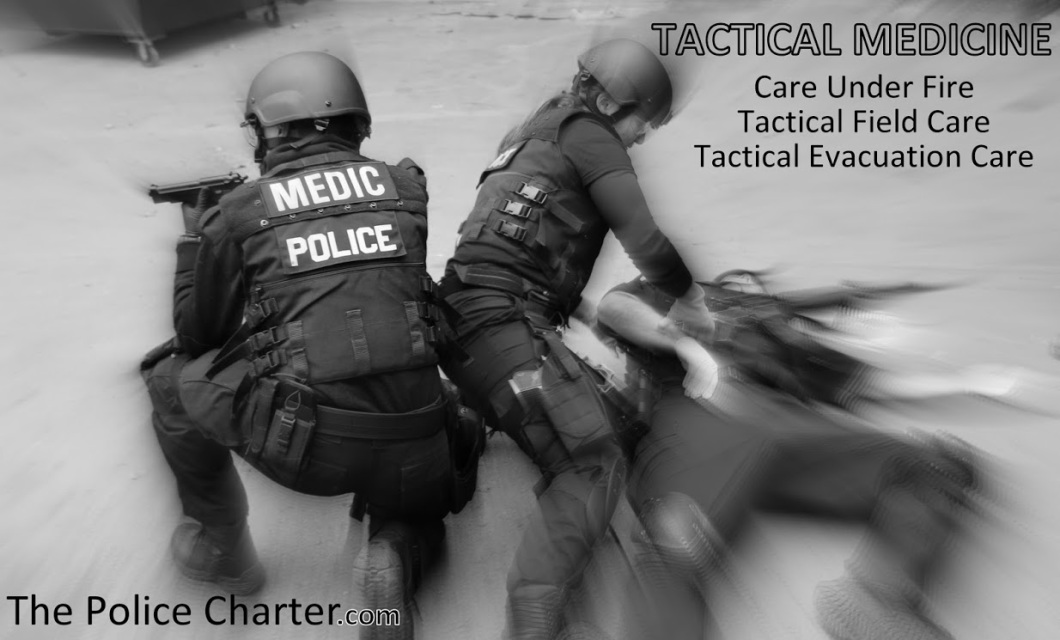
TACTICAL MEDICINE
Tac Med I ($399)
Care Under Fire / Medical Aid for the Combat / Patrol Officer
Usually two days
Care Under Fire is rendered at the scene of the injury while you and the casualty are still under effective hostile fire (in the "Hot Zone" AKA "On the X" and access to medical resources are limited to what you carried with you and not usually much. The risk of additional injuries at any moment is extremely high for both the casualty and the rescuer.
The major considerations during this phase of care are the following:
- Suppression of hostile fire.
- Moving the casualty to a safe position.
- Treatment of immediate life-threatening hemorrhage.
U.S. Military TCCC CUF Actions
1. Medical decisions are limited.
2. Move to cover/return fire as required/directed.
a. Keep yourself from being shot.
b. Casualty should also return fire if able.
c. Try to keep casualty from sustaining additional wounds.
3. Casualty should attempt self-care if possible.
4. Stop major life-threatening bleeding.
a. Extremity: tourniquet
b. Nonextremity: pressure dressing
c. Ignore non-life-threatening bleeding
5. Defer airway management until the TFC stage.
6. Reassure the casualty.
Our training program focuses on filling in the details in these areas.
We also address the active shooter scenarios, and the proven issues that have been found in the 'hot-zone'
(aka "On the "X"").
Tac Med II ($499)
Tactical Field Care
Usually two days
Tactical Field Care: Rendered once the casualty is no longer under hostile fire. Medical equipment is still limited to that carried into the field by mission personnel. Time prior to evacuation may range from a few minutes to many hours
Tac Med III ($499)
Tactical Combat Casualty Care (TCCC)
Usually 2 to 5 days
Includes Level I and II and also Tactical Evacuation Care (TACEVAC): Rendered while the casualty is evacuated to a higher echelon of care. Any additional personnel and medical equipment pre-staged in these assets will be available during this phase.
TACEVAC (MEDEVAC or CASEVAC) is the movement of casualties from in or near the èhot zone (on the X or near it) to a Medical Treatment Facility (MTF) for more definitive care.
CASEVAC refers to the movement of casualties aboard nonmedical vehicles or aircraft. •
Care is rendered while the casualty is awaiting pickup or is being transported.
When accompanying an unconscious casualty the Tactical Medic should monitor the casualty's airway, breathing, and bleeding. and respond with the appropriate Tactical Medicine treatment protocols.
WHAT TO EXPECT.
- We review previous Tactical Standards covered so far
- We update some new and added medical treatments
- Candidates act as armed operators AND tactical medics.
- We create a few of tactical scenarios with active participation
- We teach the new TCCC protocols for TacEvac
- We cover and complete the new Casualty Care Card
- Candidates will learn and do the 9-liner / air exfil / tacevac radio call
- Concussion and Traumatic Brain Injury (TBI) in the field
- There is a lot of Tactical Evacuation Care treatment with Tactical shootings and blast treatment
- DAY 1 is mostly academic.
- Day 2 if mostly practical.
- Instruction will be sent.
Tac Med IV (varies)
Tactical Medic / Assault Combat Medical Tech.
Varies up to 4 weeks
Includes all previous 3 levels and included some Tactical Training as well as more advanced medical field adjuncts.
A FEW REFERENCE VIDEOS WE DID:
1 CUF: https://www.youtube.com/watch?v=H7V7pLuJYmk
2 TFC: https://www.youtube.com/watch?v=IZVW5f0QALY
3 TEC: https://www.youtube.com/watch?v=fo3OlmanaJ8
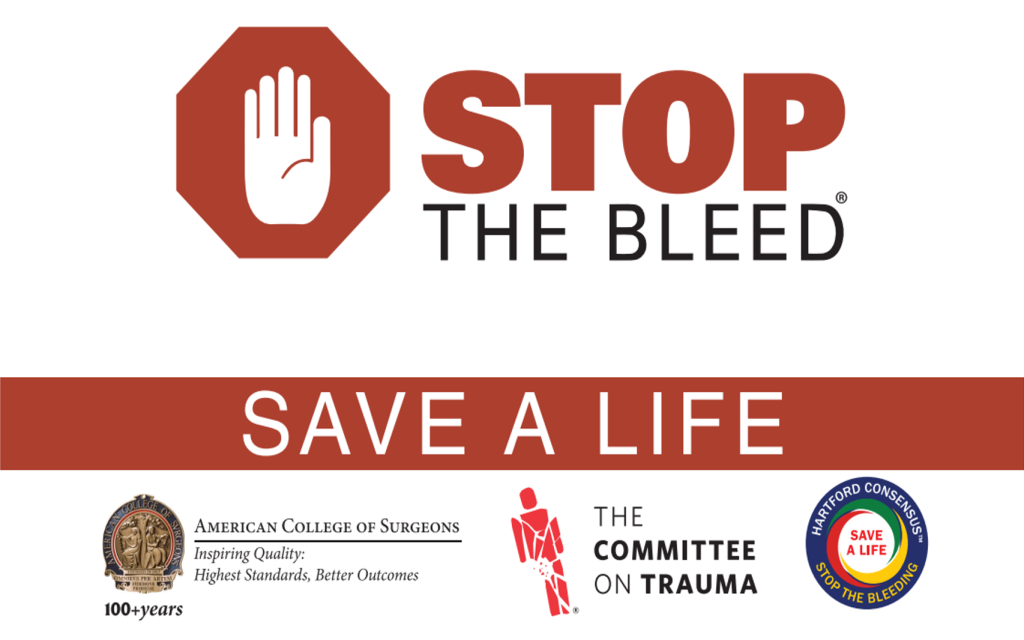
Bleeding Control (B-CON)
This course is usually offered by
The Emergency Response Team Search and Rescue (www.ERT-SAR.com)
Bleeding Control (B-Con)
Background:
Motivated by the 2012 tragedy in Sandy Hook and multiple tragedies that have occurred in the ensuing years, what has become known as the Hartford Consensus was convened to bring together leaders from law enforcement, the federal government, and the medical community to improve survivability from manmade or natural mass casualty events. The resulting injuries from these events generally present with severe bleeding which, if left unattended, can result in death.
The participants of the Hartford Consensus concluded that by providing first responders (law enforcement) and civilian bystanders the skills and basic tools to stop uncontrolled bleeding in an emergency situation, lives would be saved. The first responder program has received very good response and is widely being used across the country.
The next step is to focus on needs of civilian bystanders. Need: Civilians need basic training in Bleeding Control principles so they are able to provide immediate, frontline aid until first responders are able to take over care of an injured person. Due to many situations, there may be a delay between the time of injury and the time a first responder is on the scene.
Without civilian intervention in these circumstances, preventable deaths will occur.
Mission/Objective:
The American College of Surgeons Committee on Trauma is leading the effort to save lives by teaching the civilian population to provide vital initial response to stop uncontrolled bleeding in emergency situations.
This will be accomplished by the development of a comprehensive and sustainable bleeding control education and information program targeted to civilians that will inform, educate and empower the 300+million citizens of the United States.
Eligible Students
Eligible students are any individuals who may be called upon to assist with trauma patients while waiting for first response or EMS to arrive. The course has been designed for students who have received little or no prior medical training.
Examples of potential students include teachers, taxi drivers, train station attendants, and Transportation Security Administration (TSA) workers.
Police, Fire & Military
The preferred course for educating law enforcement officers is the Tactical Casualty Care for Law Enforcement and First Responders (TCC-LEFR) and the NAEMT Gold Standard for this professional audience is the TCCC / TECC programs. However, the BCon materials may be used to introduce these concepts to law enforcement officers and other first responders.
Usually we do a specific customised 'add-on' for these first responders.
COST:
The cost to public is usually $50
FREE OPTION
We also usually recommend a free or "expenses only" option to professional first responders like the Police or Fire or Military through the Emergency Response Team Search and Rescue (www.ERT-SAR.com) .
WHAT TO EXPECT.
- We review previous Tactical Standards covered so far
BCon Course v. 1.0 Schedule
• BCon lecture
• Tourniquet single skill station
• Wound packing single skill station
Our Average course time:
Approximately one to two hours (may be longer as needed)
Successful Completion
Successful completion entails that the student has:
• Attended the entire course
• Demonstrated all practical skills as required within the course
Certificate
The Instructor will award a Certificate designed and endorsed by the American College of Surgeons
REFERENCE VIDEOS:
https://www.youtube.com/watch?v=dkb-Ddb8QFA